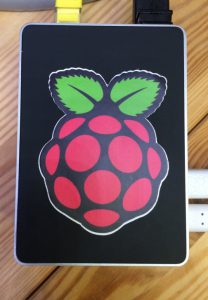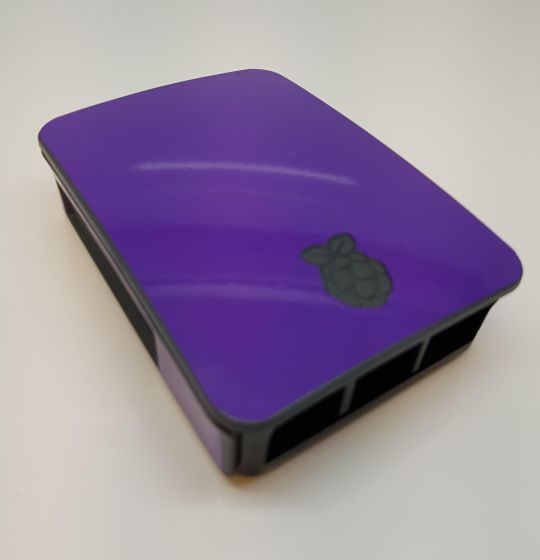

Flirc sticker windows#
So imagine if you're truly using the Pi 4 as a desktop replacement, with at least one external USB 3.0 hard drive attached, WiFi connected and transferring large amounts of data, a USB keyboard and mouse, a few browser windows open (the average website these days might as well be an AAA video game with how resource-intense it is), a text editor, and a music player.
Flirc sticker update#
A firmware update for the Pi 4 may help keep that chip a little cooler, but it will still get hot under load. That area of the board is almost always putting out a pretty large chunk of heat, and the components in this area don't put off heat as well as the metal-bodied CPU.įinally, this image was taken at idle, but if you have any activity on the USB ports, the USB controller chip on the right (that small red spot before you get to the far right of the image) lights up bright white and gets to be 60-70☌ as well. That's all the power circuitry coming off the USB-C power input. You might notice, however, the bright white areas on the lower left. The CPU/System-on-a-Chip (SoC) was around 60☌ as well, but the metal casing helps spread that heat around the perimeter pretty well, and in the IR image, the heat radiating off the top of the CPU is somewhat masked by the reflective metal surface. Here's a thermal image taken with my Seek thermal imager highlighting the parts of the board generating the most heat after 5 minutes at idle: Not only does the CPU get appreciably hot even under normal load, there are a number of other parts of the board that heat up to the point they are uncomfortable to touch. As long as there was at least a little space for natural convection (that is, with no fan), you could do almost anything with a Pi and not have to worry about heat. And thermal images or point measurements using an IR thermometer usually showed the SoC putting out the most heat. I have been using Pis for various projects since their introduction in 2012, and for many models, including the tiny Pi Zero and various A+ revisions, you didn't even need a fan or heatsink to avoid CPU throttling. The desktop kit includes the official Raspberry Pi 4 case, which is an enclosed plastic box with nothing in the way of ventilation. The Foundation even offers a Raspberry Pi 4 Desktop Kit. The Raspberry Pi Foundation's Pi 4 announcement blog post touted the Pi 4 as providing "PC-like level of performance for most users". So then I added to my configuration.December 2020 Update: Lo and behold, the Pi Foundation tacitly acknowledges the Pi needs a fan in the official case, because now they sell the Case Fan!
Flirc sticker install#
To to this I had to install the flirc_utility for linux program, and use the record function to create the new key map.Īfter doing that I ran evtest again, this time evtest displayed every key I pressed!! Yay

If your remote is not MCE compatible, you’ll need to remap the flirc to recognize your remote.

If a valid Windows MCE remote key is not received, it tosses it away to bit landia. But nothing… nada.Īfter yet more google research, I found that the Flirc was designed years ago to support a Windows MCE (media center entertainment) remote. To tell libinput to ignore my fllirc, I added this section to the libinput config file and rebooted: Section "InputClass"Īfter rebooting I ran evtest and this time successfully entered monitor mode!! So I grabbed my remote and started pressing buttons expecting evtest to display them on the terminal. Flirc is a keybord device so in the configuration file this section is causing libinput to grab my flirc at startup: Section "InputClass" I found that this is done in a configuration file for libinput. This took me quite awhile, but finally figured out it was being grabbed by libinput at startup. When I tried it gave me an error that my flirc was already grabbed by another process.

I selected event3 for evtest to monitor traffic from that device.
Flirc sticker serial#
I ran evtest and it showed my flirc device on serial event3. My Docker BaseOS is Debian10 so I installed ‘evtest’ on it. Because others reported they got their Flirc working, it motivated me to put some extra effort into this. I did all the things the op and others mentioned doing, but no matter what, I couldn’t get my Flirc working. I finally got my Flirc working with Hassio, so thought I’d share my findings hoping it will save time for others.


 0 kommentar(er)
0 kommentar(er)
